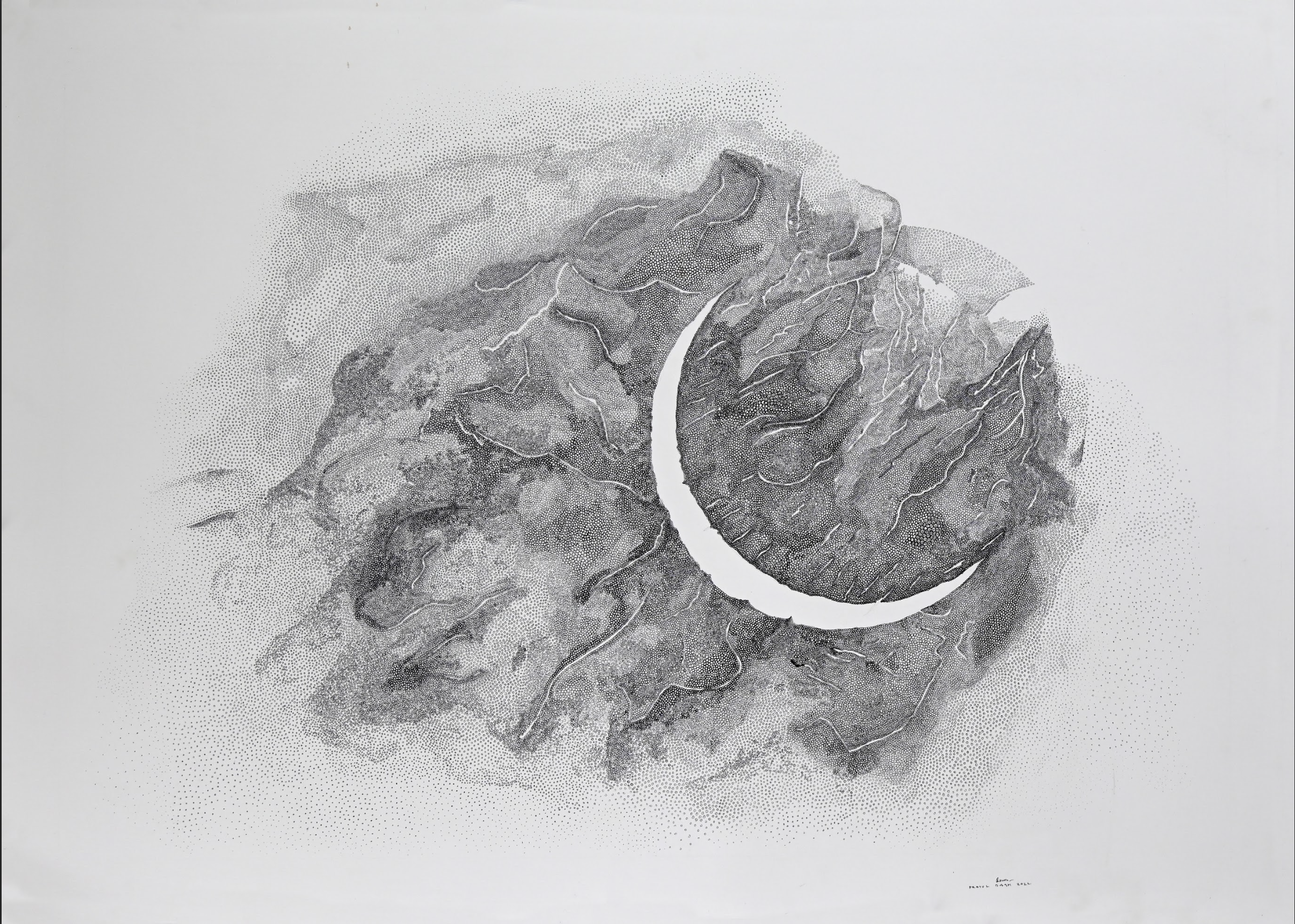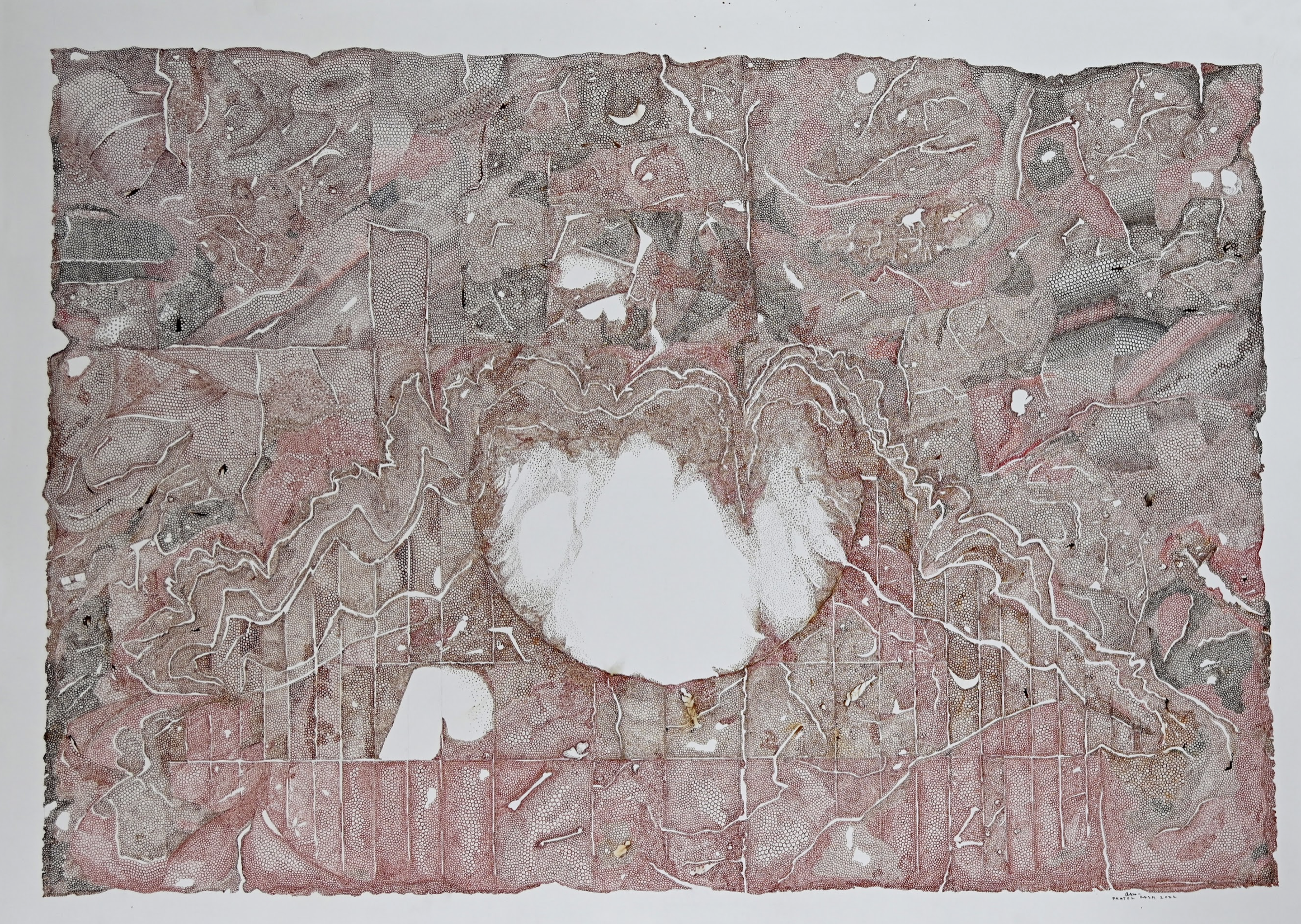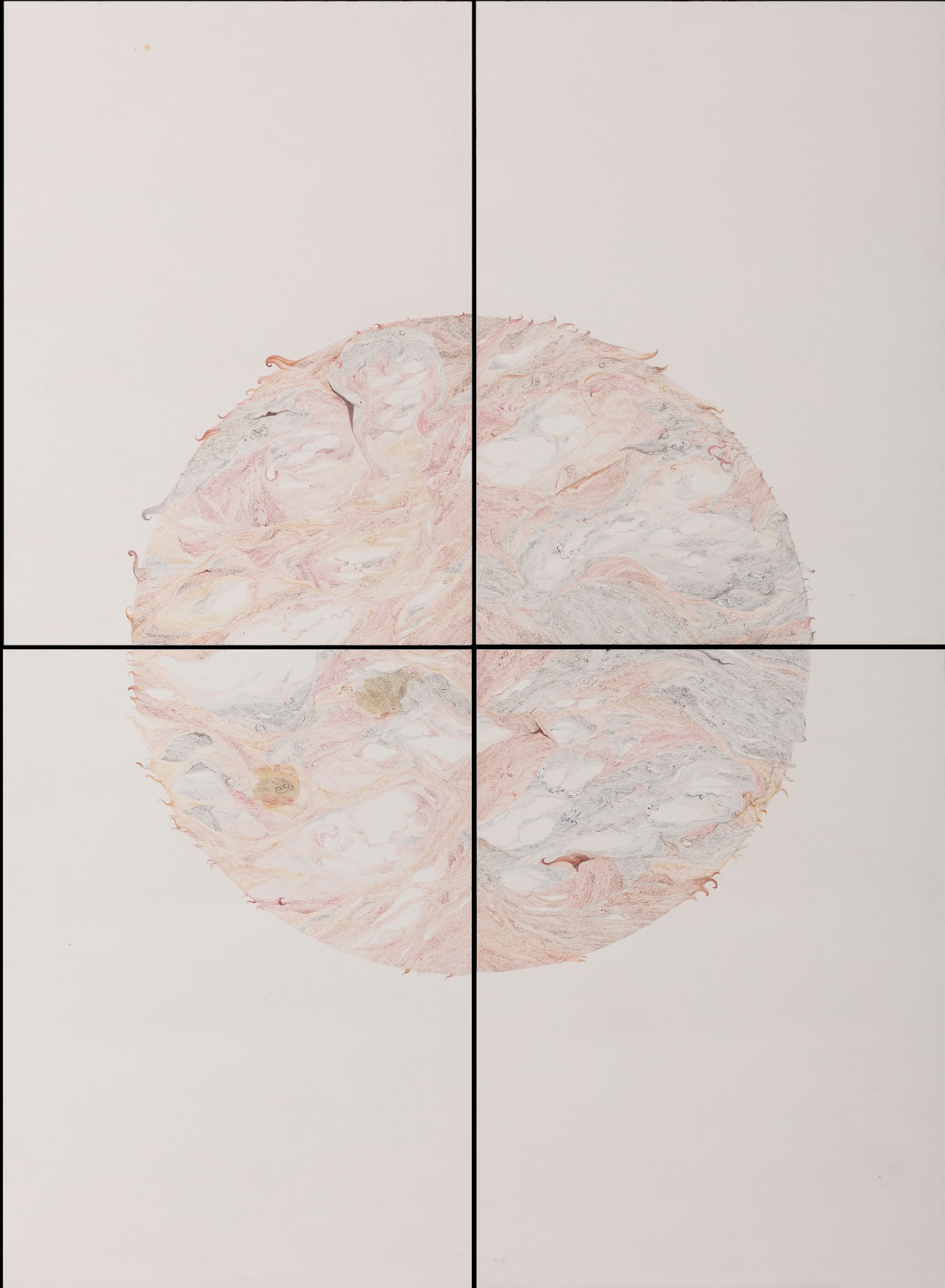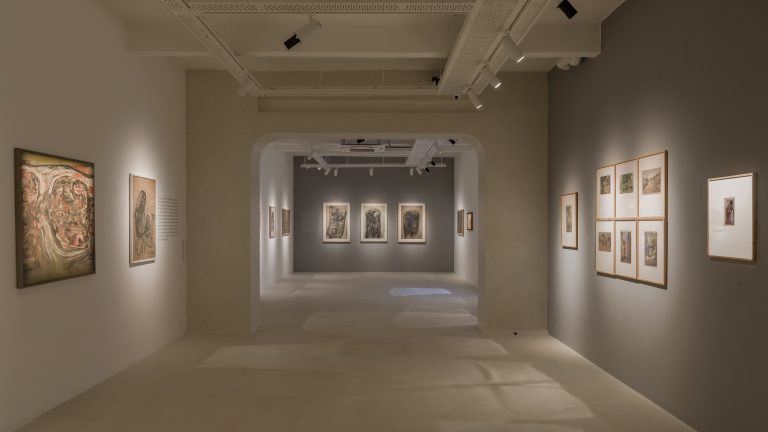
The recent body of work, which was displayed in the solo ‘A Bend in the River’, stands as a testament to Pratul Dash’s ongoing effort to draw connections between ecology and the human mind. Pratul Dash’s works read like manuscripts. Every part of the canvas tells you its own story, only to come together in one cohesive narrative when viewed as a whole. You keep coming back to the works, even the smaller ones, to discover something new that the artist is trying to tell you. What is the truth?
It seems that Dash has pursued this question in a body of works, mostly made between 2020 and 2023, which were showcased last year in New Delhi by Latitude 28 in the solo show, ‘A Bend in the River’. Everything seems to be magnified down to its microscopic cellular form. At times it feels like you are floating away on Dash’s nebulous bubbles of imagination.
Of these, The Brain (2023) is truly emblematic of his practice. Created with archival ink on Fabriano acid-free paper, the work at first glance looks like a landscape criss-crossed by a network of rivers. The long streaks of water run across like veins, making the geological form resemble a brain. The artwork stands as a testament to Dash’s ongoing effort to draw connections between ecology and the mind. For years now, his abstract works offer a philosophical observation—an alternate view of reality coming together with contemporary commentary.
Excavatory in his approach, the artist creates an archaeology of the land and the human psyche. Over time, his work has acquired a fluid quality, with fragmented memories melding into landscapes. In his essay published in the exhibition catalogue, curator Girish Shahane reflects on this changing approach: “The artist is associated with a lush-hued figurative style combining politically engaged realism with Daliesque reverie. In contrast, his creations of the past three years are monochromatic semi abstract landscapes, frequently constituted by tiny circular forms, painstakingly drawn, reminiscent of blood cells seen under high magnification.”
The suite of large-scale works such as The Crescent Moon (2022) conjure up visions of cosmic bodies, flood plains, cross sections of dug-up laterite soil, and more, when viewed from a distance. However, with every step that one takes towards the work, a viewer embarks on a journey too in the way he or she reads Dash’s art. One moves from broader histories to personal memories—the celestial gives way to the earthly and finally the inner consciousness. In Of Blood, Of Birth, Of Death (2020), you confront something that looks like an x-ray film of a landscape. Butterflies and pupae share space with skeletal forms. Somewhere you can read the words “Daag Kab Choote…”. Even though the set of 12 paintings feature splotches of colour to mimic blood stains, Of Blood, Of Birth, Of Death never comes across as macabre. There is a certain quiet beauty about Dash’s abstraction.
“Pratul juxtaposes motifs obliquely hinting at depleting resources and fragmentation of natural beauty. The precisely rendered beauty of Pratul’s paintings is in a sense deceptive, as the artist uses the tool of pictorial attraction to enrapture the viewer’s attention, demanding deeper engagement with his concerns through the visual encounter. Traversing his own memories through the canvas one encounters all forms of disruptions and rhythms—a language not unlike that of the universe and of existence itself,” mentions the exhibition note.
The influence of traditional miniature paintings is also palpable in Dash’s work, in the way he crafts the narrative and in the placement of figures—an ostrich with its head bent in the sand, a man, facing upside down, holding a vine of flowers, and a child, reduced to his bare bones and with arms outstretched, standing on a golden cloud surrounded by butterflies in works such as Hope in a Tempest (2023). Often, there is a glimmer of hope shining through the greyness in the artist’s work.

Born in Burla, Sambalpur, Odisha, Dash instinctively started focusing on ecological issues in his work after shifting to the urban maze of Delhi from his verdant hometown. However, a certain contemplative quality emerged in his art during the pandemic, when the artist was living with his parents in Burla during the first COVID-19 induced lockdown. Located on the banks of the Mahanadi, the town’s cultural and economic fabric is deeply intertwined with the river and the Hirakud Dam located there, and Dash started responding to it anew. “Confined to Burla for four months, away from his studio and paints, Dash slaked his thirst for creation by using Rotring pens left in the house from his student days, the inks for which he procured through a friend, one of the many engineers employed at the Hirakud site or in universities that arose in Burla consequent to the dam’s construction,” writes Shahane. When the lockdown opened, the artist returned to Delhi but continued to work on his new series with pen and ink, and also mineral pigment and colour.
The devastation caused by the pandemic has been apparent in many artistic practices since 2020. And Dash’s is no different. The news of thousands of deaths wrought by the Delta wave in 2021, the lack of space to bury the dead and the attempts to suppress the drastic impact of the pandemic by political forces has made its presence felt in Dash’s works such as Memory of Unrecorded Records. In the single-channel video, Disrupted Meta-Memorabilia: A Journey Through Time and Transformation (2020-23), Dash pays an ode to the adaptive human spirit. From the quiet environs and starlit skies of Burla, where people, confined indoors, make do with the material they have to create something, the video transitions to the farmers’ protest in Delhi, chronicling the way humanity responds to sudden disruptions, and the fickle nature of the media in relegating certain narratives to the background.

The many churnings of Dash’s heart and soul become visible in Spherical Soliloquy II (2022), where he used a minimalist language to showcase the upheavals taking place within. Poetry has always played a huge role in Dash’s work. And this particular painting has been influenced by Haldhar Nag, a Sambalpuri poet and writer from western Odisha. Also known as the ‘people’s poet’, he has been writing about the ecological crisis in the state, and gender inequality—themes that mirror Dash’s own concerns and find an expression in Spherical Soliloquy II.
The last word, of course, belongs to the artist, himself, who feels that his practice is deeply enmeshed with the country’s vibrant fabric, “where human stories, cultural threads, and political landscapes come together. In a world where borders blur and global influences are strong, my creative expressions tell a story of how local and universal ideas dance together.”

A Bend in the River, CCA Building, Bikaner House, Presented by Gallery LATITUDE 28, New Delhi, September 29 – October 07, 2023.














